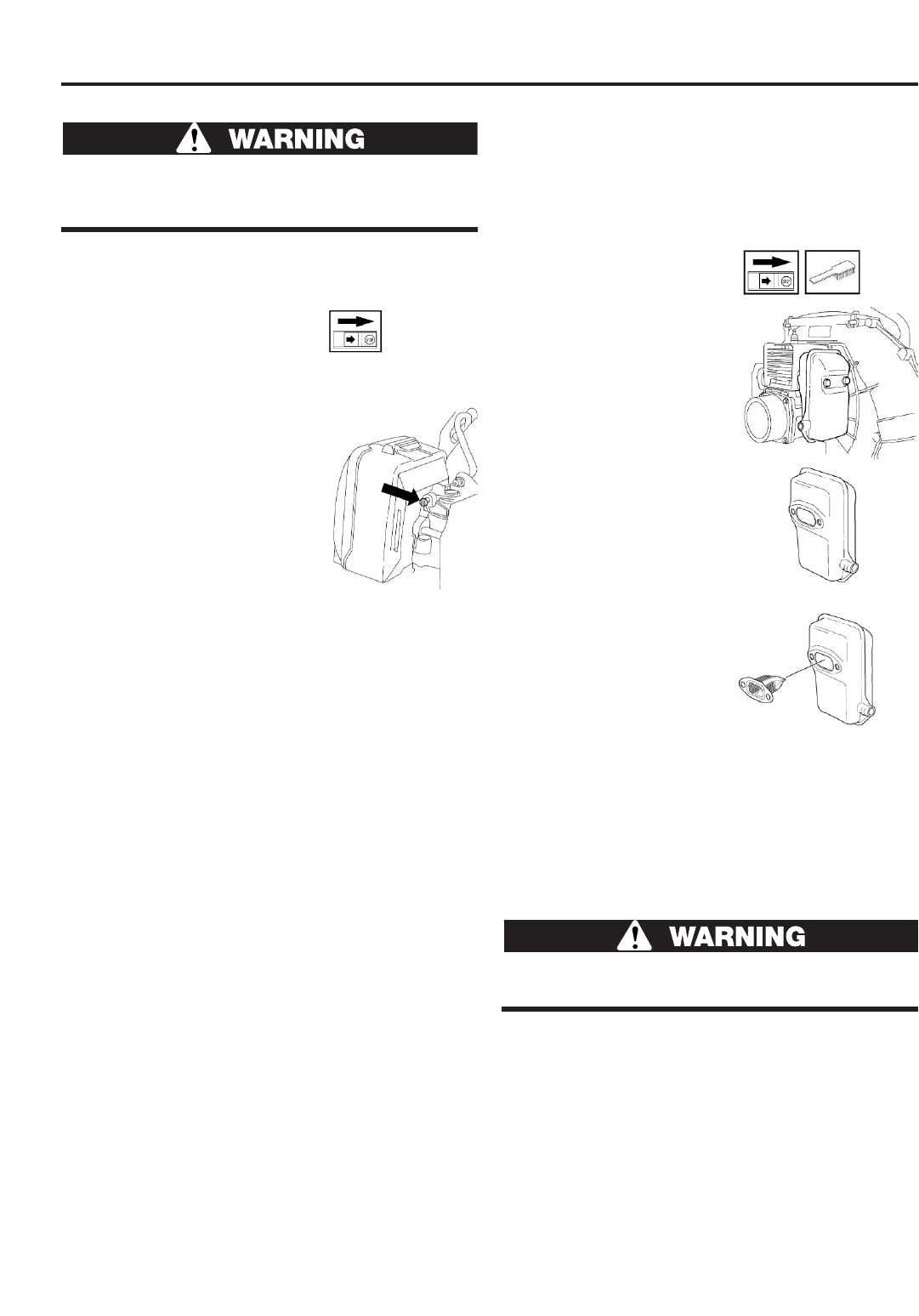
13
Carburetor
The unit’s engine is broken in
after it has run through 8-10
tanks of fuel. To ensure the
engine’s peak performance,
you should have your engine
serviced by an authorized
dealer after it has been broken
in. The service technician uses
a revolution counter to adjust
the carburetor for optimum
operating conditions. This will
help the unit produce the least
amount of emissions.
Operation
The carburetor governs engine speed, through the
throttle. Air and fuel are mixed in the carburetor, and
this mixture is adjustable. This adjustment must be
accurate in order to take advantage of the engine’s
optimal output.
The carburetor should be set to adapt to local
conditions, like altitude, climate, gas, and the type of
2-stroke oil used.
Basic Setting
The carburetor is configured at a basic setting at the
factory, before it ships to the customer. This basic
setting is richer than the optimal setting. You should
keep the basic setting during the unit’s first working
hours. Afterwards, the carburetor needs to be finely
tuned by a skilled technician.
Fine Adjustment
After the engine has been broken in, it should be finely
adjusted by a qualified technician. First adjust the L-
jet, then the idling T screw, and then the H-jet.
Conditions
Before making any adjustments, be sure the air filter is
clean and the air filter cover is properly fitted. Any
carburetor adjustment performed with a dirty air filter
will result in a leaner mixture when compared with the
engine performance once the air filter is cleaned. This
can lead to serious engine damage.
Only start and use the unit when it is completely
constructed. If you use the unit without all its
covers fitted, you risk serious personal injury.
Muffler
NOTE: Some mufflers are fitted with a catalytic
converter. Refer to the Specifications to
determine whether your unit is fitted with a
catalytic converter.
The muffler is designed to
dampen the noise level of
the engine, and to direct
exhaust fumes away from
the user. Exhaust fumes
are hot and contain
sparks, which can result in
fire if the fumes are direct-
ed towards dry material.
To prevent this, some
mufflers are equipped
with a spark arrestor
screen.
If your unit has a spark
arrestor screen, you must
clean it regularly. Clean
the screen with a wire
brush.
On mufflers without a cat-
alytic converter, clean the
screen weekly, or replace
it. On mufflers configured
with a catalytic converter,
you should check and
clean the spark arrestor
screen monthly.
if the screen is damaged,
you must replace it. If the screen is blocked frequently,
an impaired catalytic converter may be to blame. if this
is the case, contact your local dealer to inspect the
muffler. A blocked spark arrestor screen will cause the
engine to overheat, possibly damaging the cylinder
and piston.
Maintenance (continued)
Never operate a unit that has a defective muffler.


















